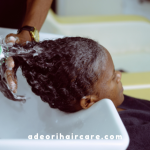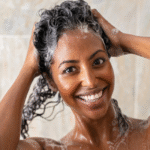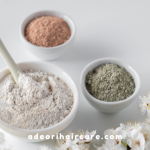Styling curly hair is both an art and a science. Each curl type, from loose waves (Type 2) to tight coils (Type 4), has unique needs, and finding the proper technique can be the difference between well-defined curls and an undefined, frizzy mess.
If you’ve ever felt like your products aren’t “working,” chances are the issue isn’t just about what you’re using, but also how you’re applying it.
Mastering the proper styling techniques helps curls clump together, a process where individual strands of hair group together, retain moisture, and hold their shape throughout the day.
The techniques shared in this guide are essential for achieving consistent, long-lasting results.
The styling methods shared in this guide are very effective for bringing the curls to life. Let’s explore them together.
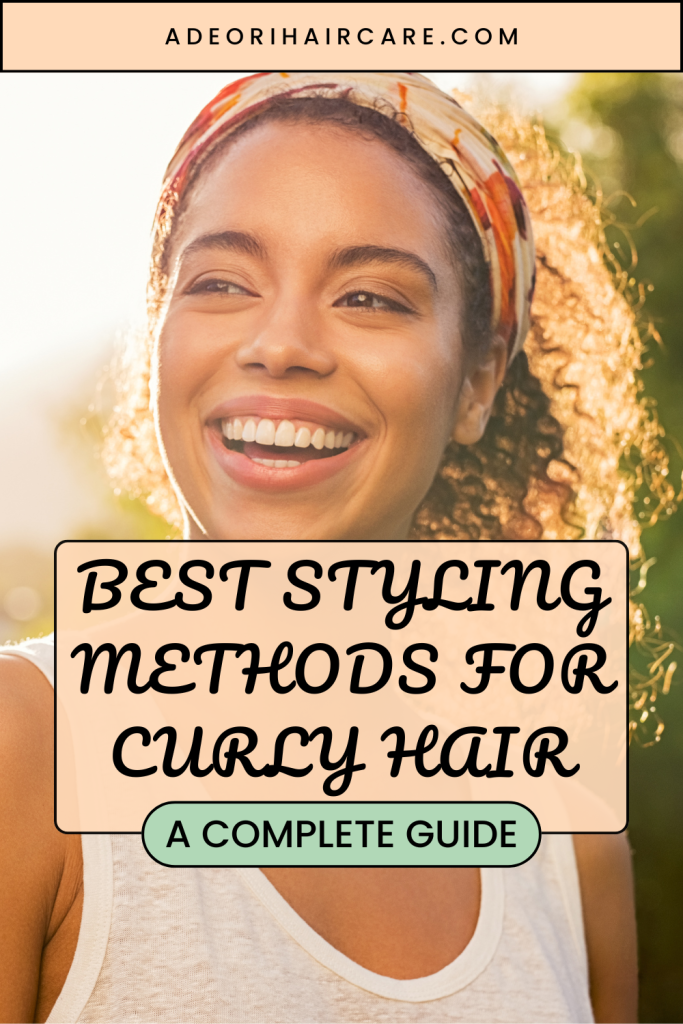
How to Style Curly Hair: Top 8 Techniques for Perfect Curl Definition
1. Raking Method
The raking method involves using your fingers to distribute product evenly through wet hair.
After applying leave-in conditioner or curl cream, run your fingers through your curls in a raking motion, similar to using a wide-tooth comb.
This helps detangle and coat every strand, and encourages curl clumping. This technique is best for looser curl patterns or curls that need help forming definition.
Pro tip: Follow raking with scrunching for more volume and spring.
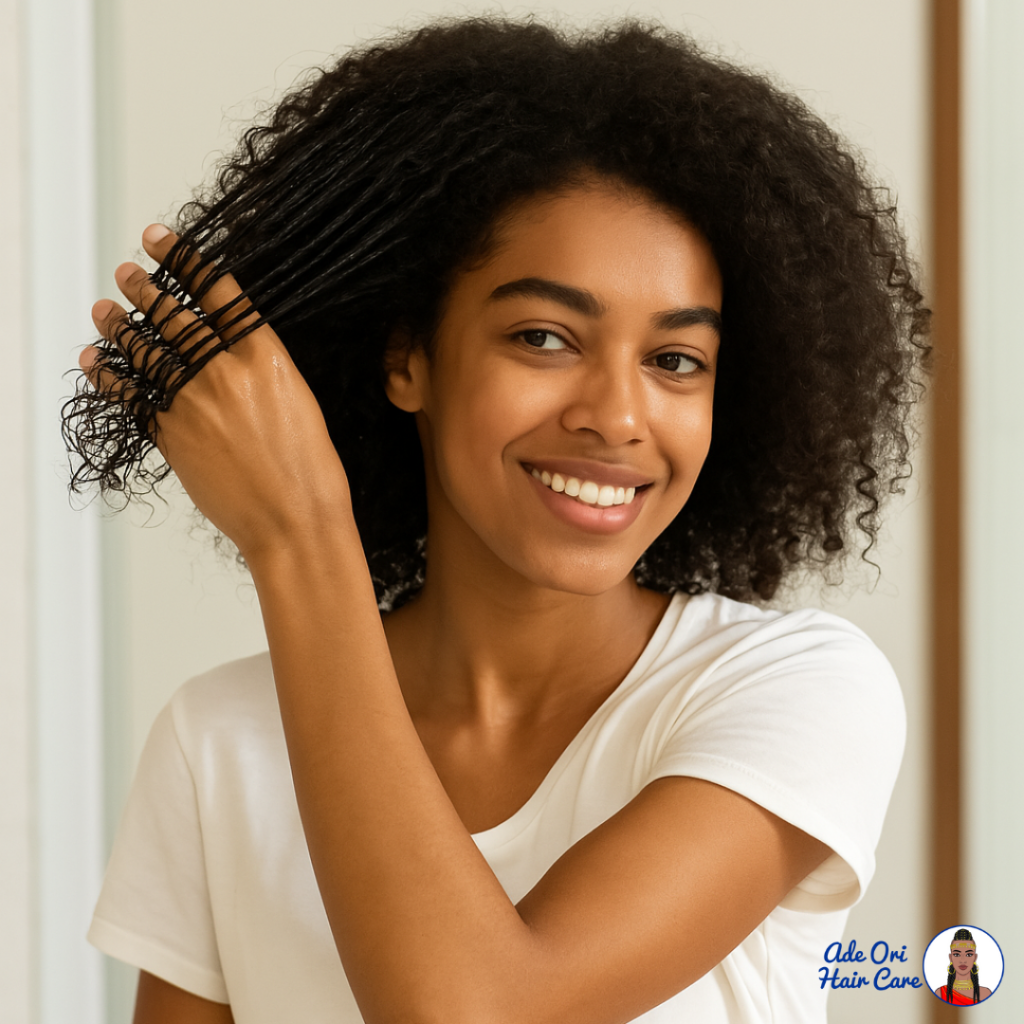
2. Praying Hands Method
This method involves smoothing product over your hair using your hands in a “praying” motion, i.e., palms flat together with hair between them.
It’s a gentle technique that helps reduce frizz and encourages curl clumping without disrupting the natural pattern.
This styling method is best for reducing frizz, especially for low-porosity or high-shrinkage hair.
Pro tip: Use praying hands to layer gels or creams over leave-ins.
3. Scrunching
Scrunching is a universal favorite for encouraging curl formation. With your head upright or flipped over, gather sections of hair in your hands and gently scrunch upward toward the scalp.
This compresses the curls and helps them spring into shape. It’s best for enhancing natural curl pattern and boosting bounce.
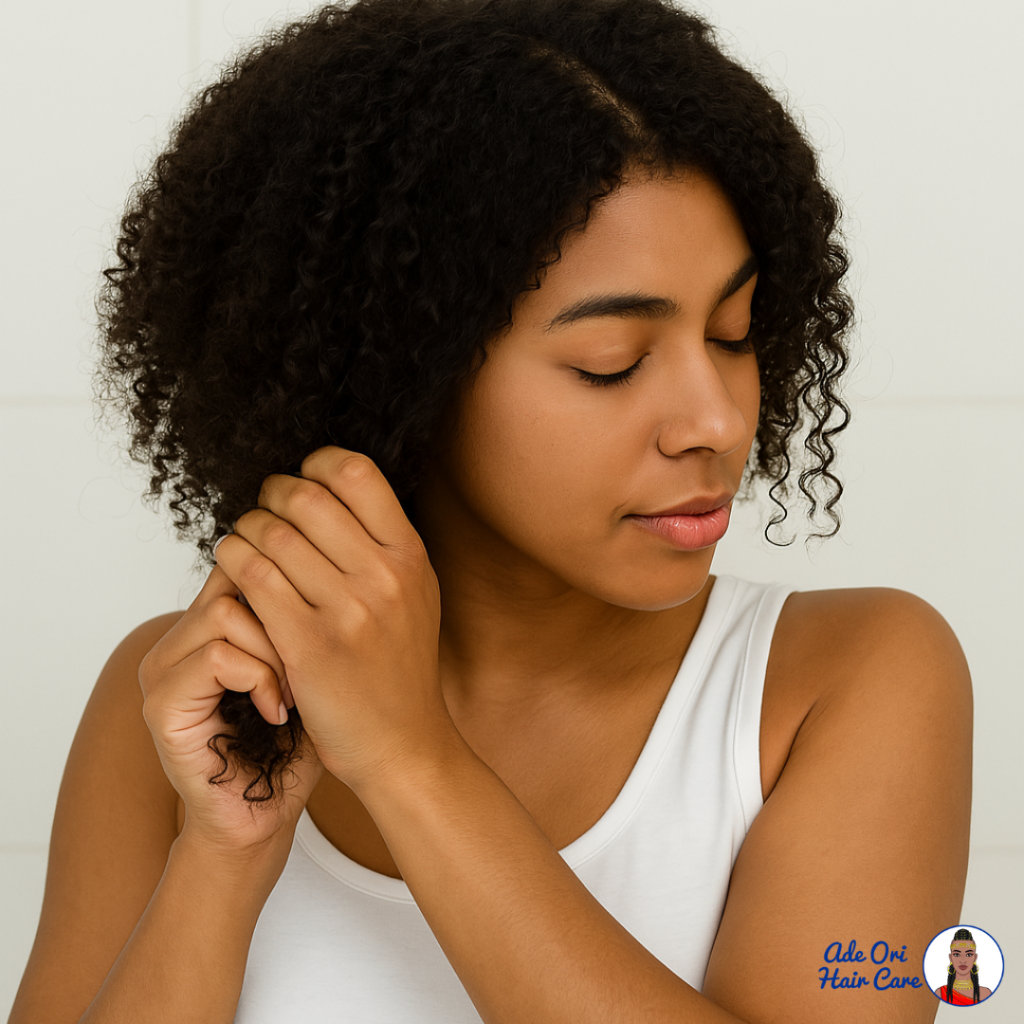
Pro tip: Scrunch with a microfiber towel or cotton T-shirt to remove excess water without causing frizz.
4. Shingling Method
The shingling method requires you to apply the product in small sections, smoothing it into each strand with your fingers.
This process takes time but yields highly defined, frizz-free curls that last for days. It’s best for tighter curl patterns (Type 3C to 4C), high-definition styles.
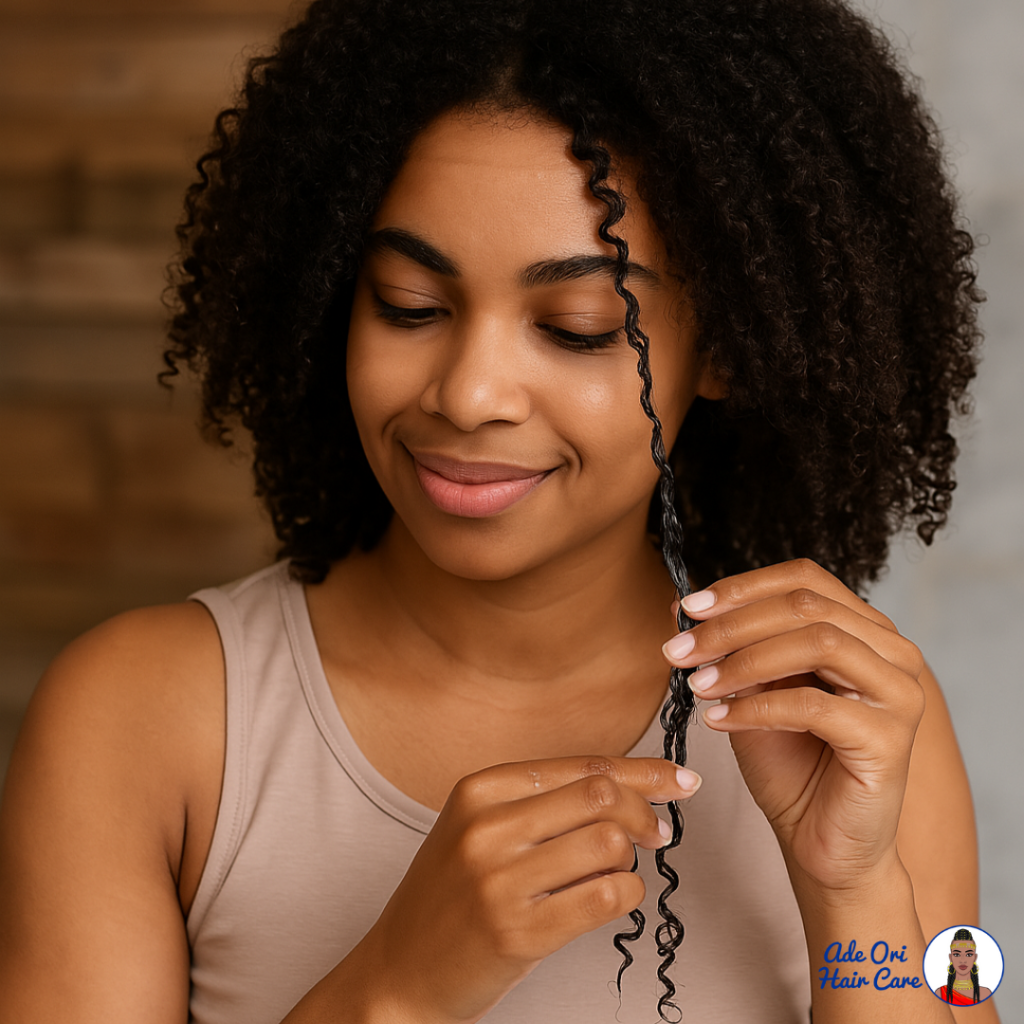
Pro tip: Use a styling cream with good slip and take your time with small sections.
5. Finger Coiling
Finger coiling involves wrapping small sections of hair around your finger to encourage curl formation and create uniform coils.
This technique is especially useful if your curls need extra definition or are recovering from damage.
It’s best for reviving curl pattern, special occasions, or wash-and-go styles.
Pro tip: Combine finger coiling with the shingling method for maximum definition.
6. Plopping
Plopping is a drying technique that enhances curl shape while reducing frizz. After styling, wrap your hair in a microfiber towel or cotton T-shirt and let it “plop” on top of your head.
This allows curls to dry in a coiled position without being weighed down. This technique is best for wavy to curly hair types looking for volume and definition.
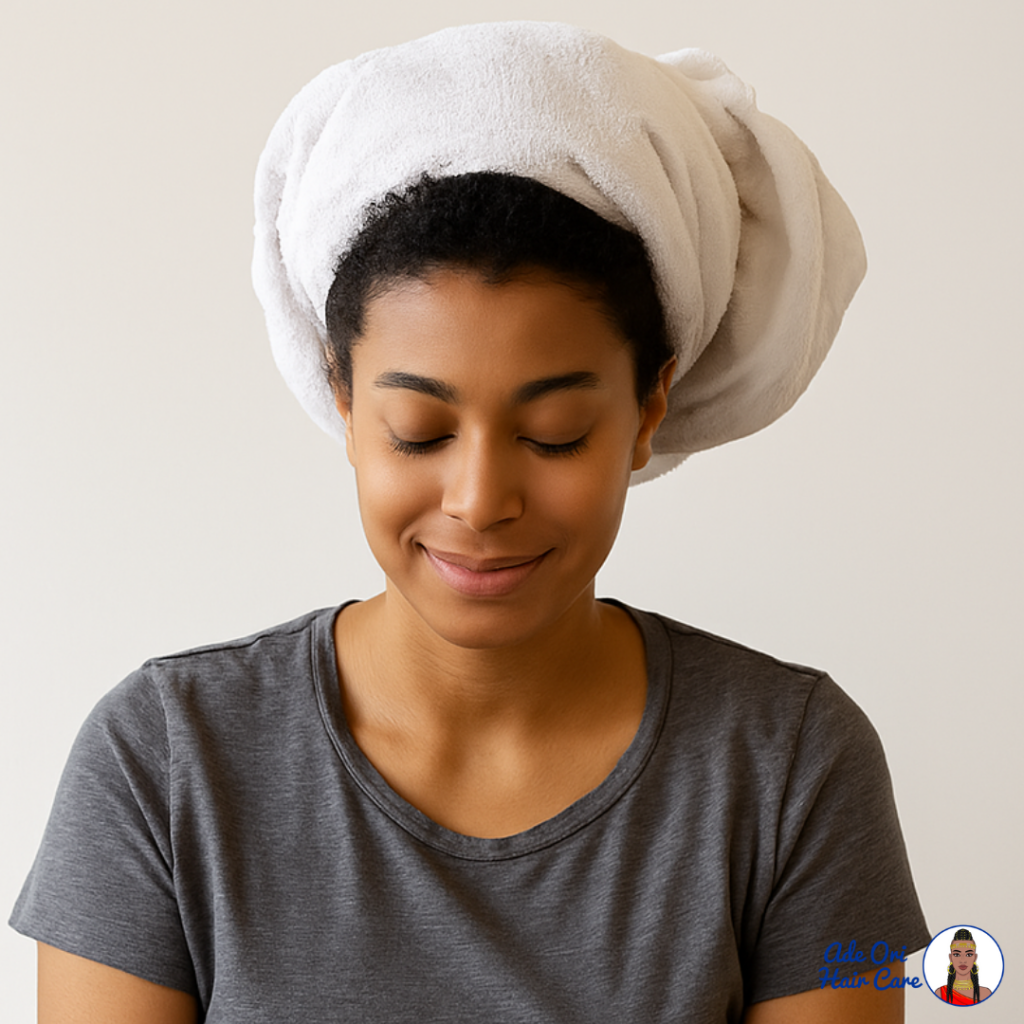
Pro tip: Only plop for 10–20 minutes to avoid a flat crown.
7. Clump and Clip (Root Clipping)
After applying products and styling, use small hair clips at the roots to lift curls as they dry.
This keeps your roots from drying flat and encourages volume without frizz. It’s best for adding root volume and avoiding a flat crown.
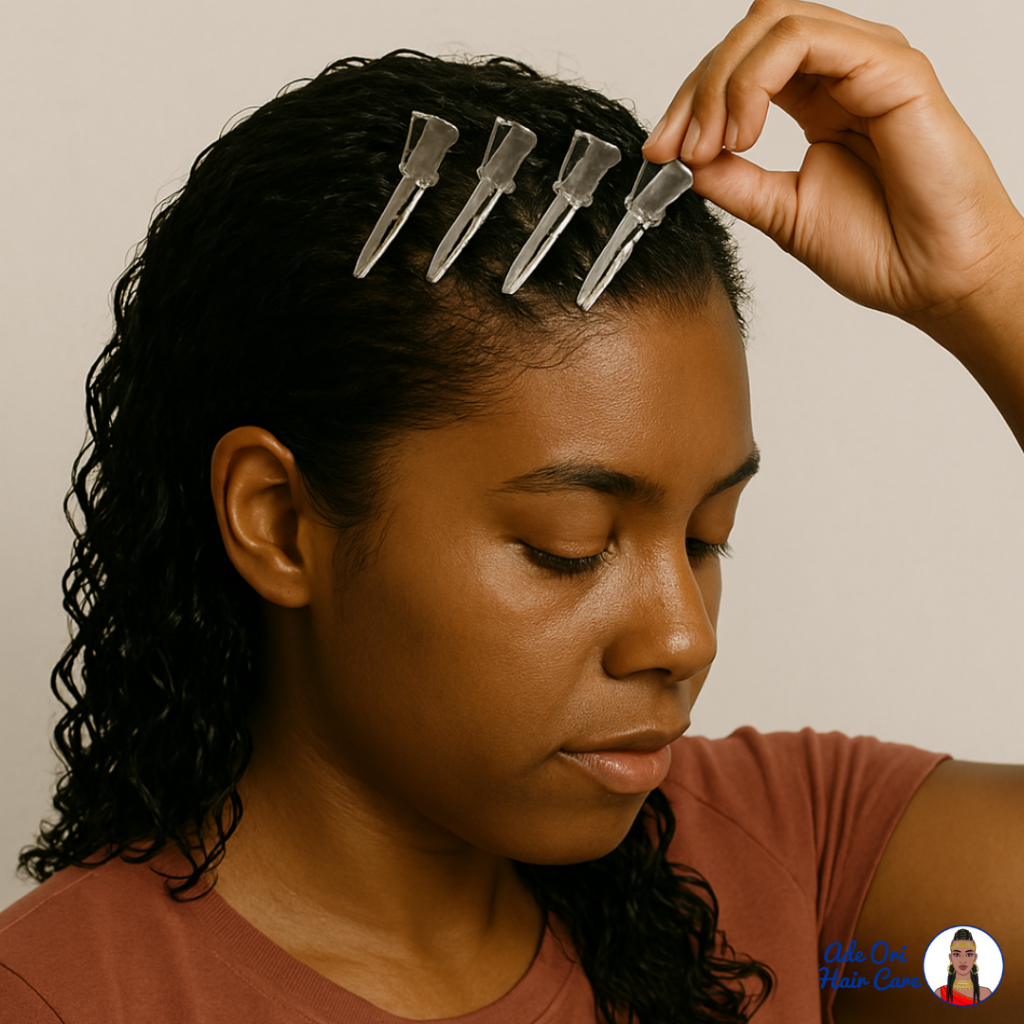
Pro tip: Clip at the base of the curl (not the scalp) to avoid disturbing the curl pattern.
8. Brush Styling (Using a Curl-Defining Brush)
Use a curl-defining brush like Denman to style wet hair in sections.
The brush helps distribute product evenly and encourages curl clumping by smoothing and defining as it passes through the strands.
This technique works for all curl types, especially those that need extra clump and shape, but is best in small sections for curlier hair types.
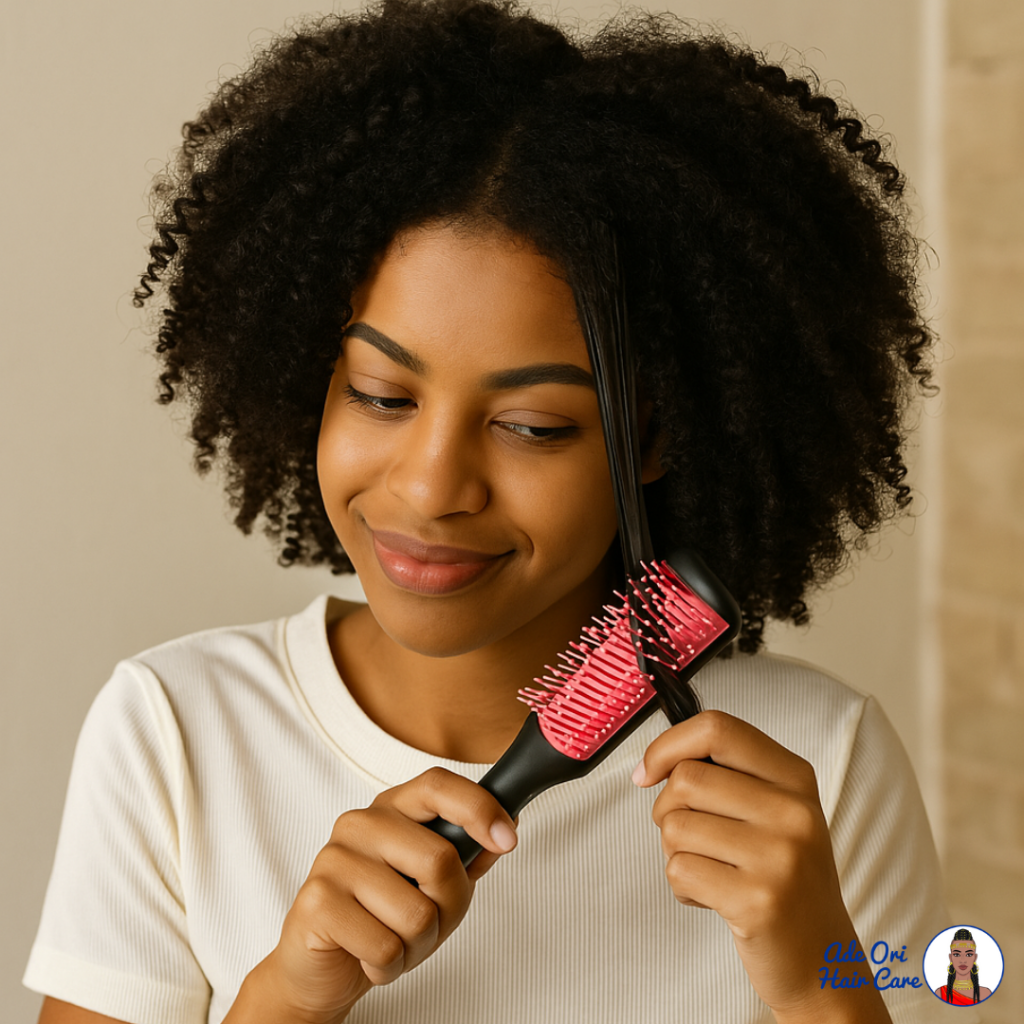
Pro tip: Always brush style on soaking wet hair for best results.
Best Curly Hair Styling Techniques (Summary Table)
Here’s a quick look summary table of all the curly hair styling techniques covered in this article:-
| TECHNIQUE | PURPOSE | BEST FOR | PRO TIP |
| Raking | Even product distribution and detangling | All curl types, especially looser curls | Follow with scrunching to enhance definition |
| Praying Hands | Smooths hair and reduces frizz | Frizz-prone or low-porosity hair | Combine with gel layering for better hold |
| Scrunching | Encourages curl formation and bounce | Most curl patterns for added bounce | Use a microfiber towel or t-shirt to reduce frizz |
| Shingling | Defines curls by applying product strand by strand | Tighter curl patterns (Type 3C to 4C) | Take your time and work in small sections |
| Finger Coiling | Enhances uniform curl definition | Damaged or uneven curl patterns | Pair with a curl cream for added hold |
| Plopping | Reduces frizz while drying and enhances shape | Volume and shape with minimal frizz | Limit plop time to avoid flat roots |
| Root Clipping | Lifts curls at the roots to prevent flatness | Volume at the roots for all hair types | Clip at base of curls, not scalp, to maintain pattern |
| Brush Styling | Defines curls with brush and product | Even product distribution and curl clumping | Use on soaking wet hair for best results |
Final Tip: Find What Works for Your Curly Hair
There is no one-size-fits-all curling technique. Your hair texture, porosity, density, and personal styling goals are crucial in finding the proper technique for you.
For example, try the raking method followed by the praying hands technique and finish with scrunching to see what gives you the best results.
Remember, your hair is unique, and experimentation is key to finding what works best for you.
Experiment, take notes, and don’t be afraid to change things as your hair’s needs evolve.
With the proper methods in your routine, your curls can thrive with definition, bounce, and shine.
Get Access to the Best Tools and Resources for Curly Hair
If you’re struggling with the best tools and resources for your healthy hair journey, fill in the Curly Hair Care Quiz for my best recommendations.
Abi is the founder behind Ade Ori Hair Care and the Healthy Natural Hair Products ecosystem, a platform trusted by women seeking clean, effective solutions for textured hair. With over 10 years of hands-on experience, she combines research-backed insight, ingredient transparency, and natural formulations to help women nourish their curls from the inside out. She’s passionate about empowering women through DIY tools, holistic hair education, and a community-first approach. Learn more here.

